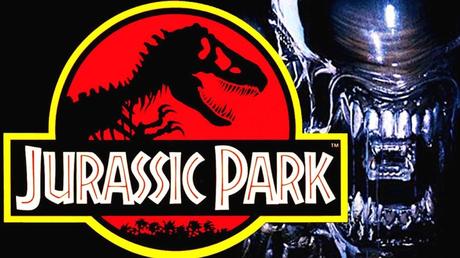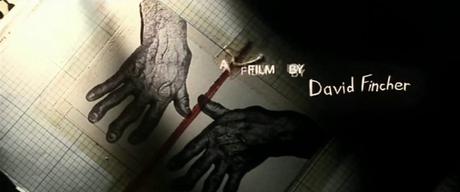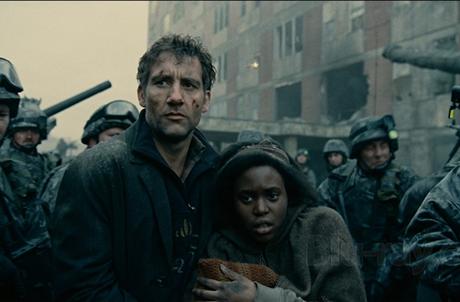 The original 'Jurassic Park' logo aligned with the original 'Alien': Monsters of a feather fight together
The original 'Jurassic Park' logo aligned with the original 'Alien': Monsters of a feather fight together
Science fiction and horror happen to be two of my favorite movie genres, among the infinite varieties that are out there. Although most people - film critics primarily - tend to separate the two categories, there has always existed an interrelation and a correlation between these subjects.
But a problem exists in that one's ability to use science fiction and horror in the classroom, in particular for a course based on history, American or otherwise, can be hampered by the intrinsic nature of both genres.
Personally speaking, I prefer not to separate them. In technological respects, the science fiction film (shortened to sci-fi) is in a category by itself. Be that as it may, because most sci-fi flicks and horror movies deal with monsters or aliens of one form or another - either real or imagined - every so often the two genres are lumped together and treated interchangeably as a single unit.
It's hard to say whether this end result is good or bad, or even viable as a means of cinematic representation. Basically, we'll leave that up to the individual viewer to interpret. Or better yet, to the presenter.
Take, for example, the movies Jurassic Park (1993) and the Alien series. True, there be monsters here! But if we were to base our assumptions on director Sir Ridley Scott's prequel forays into the Alien's origins ( Prometheus, 2012; Alien: Covenant, 2017), one can readily spot the scientific connections inherent in Alien pictures with those of the Jurassic Park-themed sequels of today (vis-à-vis "Dino DNA" and such). In view of this apparent affiliation, our own inclination is to leave well enough alone and keep sci-fi together with horror.

In the interest of specificity, true science fiction teaches and instructs as well as entertains. Horror, on the other hand, typically entertains. That's an interesting term, "entertain," whereby the subject under discussion is horror. One never thinks of horror as entertaining but believe you me it is!
Keep in mind, too, that horror's main purpose is to scare the bejeezus out of viewers. Now THAT'S entertainment! It should also but often does not make audiences think long and hard about what is happening on screen and before our very eyes. Ken Russell's Altered States, from 1980, is a prime example of the thinking person's horror flick doubling as sci-fi (and vice versa). In many instances, pondering over specific details as to whether a film fits comfortably or not into one category or another can lead to confusion and markedly less clarity over time.
There are many other examples of subgenres within each group and type. To cite but a few, the following sci-fi subgenres contain (but are not limited to) aliens and alien invasion pictures; space travel epics (that is, visits to or from other planets); galaxy wars; the mad or evil scientist; the good-bad robot dichotomy; man vs. machine; computer sentience and the resultant evil associated with it; the messiah complex or "the savior among us," and so forth.
Indeed, there are so many subgenres, themes, variations, plots, and counterplots to distract and inform curious viewers that it can become problematic at times to successfully categorize each film or subject by a specific genre.
Even films that are not strictly horror-based, such as David Fincher's crime drama/police procedural Se7en (1995), contain many horrific elements affixed to them; others boast of strictly film noir aspects. Certainly, 1950s sci-fi classics bore close relationships to, and outgrowths of, the film noir tendencies that prevailed in the post-World War II period.

This type of subgenre evolved from, and was likely due to, the advent of McCarthyism and the ensuing House Un-American Activities Committee hearings, along with the concurrent Red Scare menace. "Red Scare" or "Red menace," in this context, meant concern over alleged Communist infiltration of the U.S. government and/or the military, reinterpreted in numerous films of the period as fear of a Martian invasion of Earth. Major examples include The Thing from Another World (1951), The Man from Planet X (1951), Red Planet Mars (1952), The War of the Worlds (1953), Invasion of the Body Snatchers (1956), and The Manchurian Candidate (1962).
An outgrowth of this theme were those Atomic Age pictures, the so-called "Bug-Eyed Monster" movies of an era where the emphasis went from fear of nuclear annihilation to experiments gone horribly wrong, thinly if not overtly hinted at in The Beast from 20,000 Fathoms (1953), It Came from Outer Space (1953), Godzilla (1954), Them! (1954), It Came from Beneath the Sea (1955), The Deadly Mantis (1957), and The Giant Behemoth (1959).

Good science fiction, as opposed to the bad kind (though not always), tries to ask and, hopefully, answer the hard questions: "Will we be better off in the future? What does the future hold for us humans that will make our lives (or the world itself) a better place? Will our Earth be a more meaningful, more habitable planet? Or will the world be in worse condition than it is now?"
In effect, science fiction is tantamount to predicting the future, phrased here as the unknownable. And you know how difficult, how dangerous, and how inaccurate one can be about predicting what hasn't yet occurred! In most cases, it can be a hit or miss affair. Many people thought the world would come to an end back in the late 1990s. Some even asked themselves, "Hey, what happened? Why did those predictions not come true?" How's that again? A better response to that query should have been: "Why would we want them to be true in the first place?"
Sure enough, the sun rose as it always does; and the world continued on its merry course as it has always done - for better or for worse. Putting it plainly, it was business as usual for most people on terra firma. Why should it be different for anyone else?
This dissatisfaction with the way things are, amid prospects or expectations for how things can or should be (but can't be), often reveal themselves as fodder for another science fiction-type subgenre, i.e., the increasingly-popular dystopian feature. As an extension of our shared experiences, an ancillary aspect can manifest itself in speculative fiction, which some writers prefer to employ in describing their overall work.
What the future may hold for humans as a species and whether or not we give in to our basest instincts can be sampled and observed in such cinematic depictions as Robert Wise's The Day the Earth Stood Still (1951) and its underestimated 2008 remake, Stanley Kubrick's 2001: A Space Odyssey (1968), Jack Arnold and Joseph Newman's This Island Earth (1955), Frank McLeod Wilcox's Forbidden Planet (1956), Michael Radford's 1984 (1984), Terry Gilliam's Brazil (1985), and Gene Roddenberry's Star Trek TV-series (1966-1969).
In the area of speculative fiction, the likes of Alfonso Cuarón's Children of Men (2005), from English writer P.D. James' 1992 publication, or the Hulu series The Handmaid's Tale (from 2017 to current), based on Canadian author Margaret Atwood's 1985 book, have blurred the lines of what one can normally identify as pure, unadulterated science fiction.

As you can see, science fiction and, yes, horror, dystopian and speculative fiction films share living space in many peoples' households. They will always be welcome, for the reason they have a tendency to guide and provide curious minds with some basic life lessons. Whether we, as a species, can learn from these lessons remains to be seen.
While they may not be, strictly speaking, "historical" in nature, they remain viable and enjoyable as pure entertainment. Our hope, then, is that science itself and the findings inherent in the promise of a better life in the years to come can satiate our curiosity about the world around us. More importantly, the message we can derive from watching these features would be their ability to foster renewed interest in the future and, in the wise words of Professor Henry Jones Sr., provide us with some "illumination."
And THAT'S a fact!
Copyright © 2022 by Josmar F. Lopes

